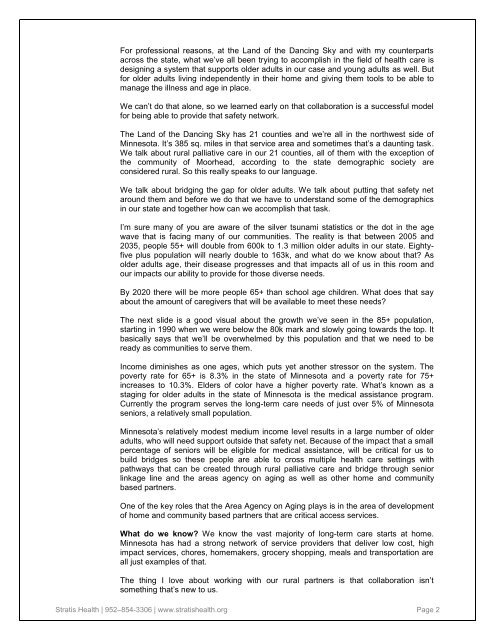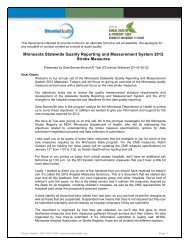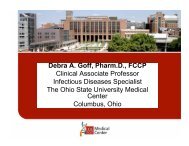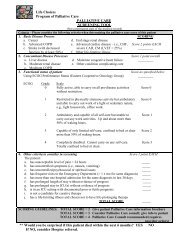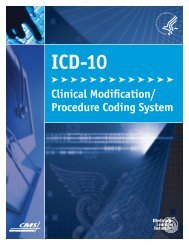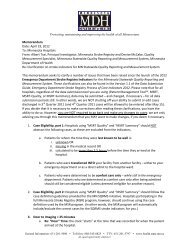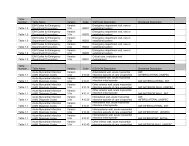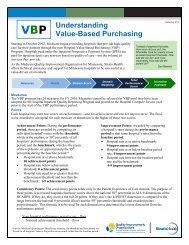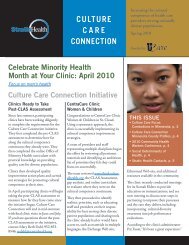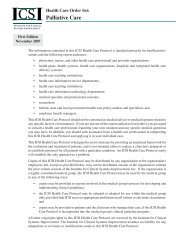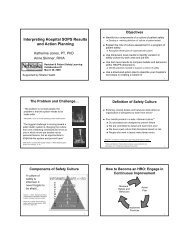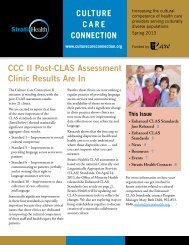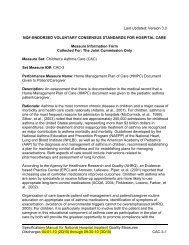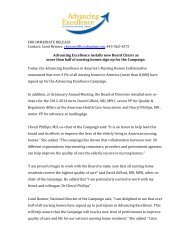Webinar Transcript Template - Stratis Health
Webinar Transcript Template - Stratis Health
Webinar Transcript Template - Stratis Health
Create successful ePaper yourself
Turn your PDF publications into a flip-book with our unique Google optimized e-Paper software.
For professional reasons, at the Land of the Dancing Sky and with my counterparts<br />
across the state, what we’ve all been trying to accomplish in the field of health care is<br />
designing a system that supports older adults in our case and young adults as well. But<br />
for older adults living independently in their home and giving them tools to be able to<br />
manage the illness and age in place.<br />
We can’t do that alone, so we learned early on that collaboration is a successful model<br />
for being able to provide that safety network.<br />
The Land of the Dancing Sky has 21 counties and we’re all in the northwest side of<br />
Minnesota. It’s 385 sq. miles in that service area and sometimes that’s a daunting task.<br />
We talk about rural palliative care in our 21 counties, all of them with the exception of<br />
the community of Moorhead, according to the state demographic society are<br />
considered rural. So this really speaks to our language.<br />
We talk about bridging the gap for older adults. We talk about putting that safety net<br />
around them and before we do that we have to understand some of the demographics<br />
in our state and together how can we accomplish that task.<br />
I’m sure many of you are aware of the silver tsunami statistics or the dot in the age<br />
wave that is facing many of our communities. The reality is that between 2005 and<br />
2035, people 55+ will double from 600k to 1.3 million older adults in our state. Eightyfive<br />
plus population will nearly double to 163k, and what do we know about that? As<br />
older adults age, their disease progresses and that impacts all of us in this room and<br />
our impacts our ability to provide for those diverse needs.<br />
By 2020 there will be more people 65+ than school age children. What does that say<br />
about the amount of caregivers that will be available to meet these needs?<br />
The next slide is a good visual about the growth we’ve seen in the 85+ population,<br />
starting in 1990 when we were below the 80k mark and slowly going towards the top. It<br />
basically says that we’ll be overwhelmed by this population and that we need to be<br />
ready as communities to serve them.<br />
Income diminishes as one ages, which puts yet another stressor on the system. The<br />
poverty rate for 65+ is 8.3% in the state of Minnesota and a poverty rate for 75+<br />
increases to 10.3%. Elders of color have a higher poverty rate. What’s known as a<br />
staging for older adults in the state of Minnesota is the medical assistance program.<br />
Currently the program serves the long-term care needs of just over 5% of Minnesota<br />
seniors, a relatively small population.<br />
Minnesota’s relatively modest medium income level results in a large number of older<br />
adults, who will need support outside that safety net. Because of the impact that a small<br />
percentage of seniors will be eligible for medical assistance, will be critical for us to<br />
build bridges so these people are able to cross multiple health care settings with<br />
pathways that can be created through rural palliative care and bridge through senior<br />
linkage line and the areas agency on aging as well as other home and community<br />
based partners.<br />
One of the key roles that the Area Agency on Aging plays is in the area of development<br />
of home and community based partners that are critical access services.<br />
What do we know? We know the vast majority of long-term care starts at home.<br />
Minnesota has had a strong network of service providers that deliver low cost, high<br />
impact services, chores, homemakers, grocery shopping, meals and transportation are<br />
all just examples of that.<br />
The thing I love about working with our rural partners is that collaboration isn’t<br />
something that’s new to us.<br />
<strong>Stratis</strong> <strong>Health</strong> | 952–854-3306 | www.stratishealth.org Page 2


